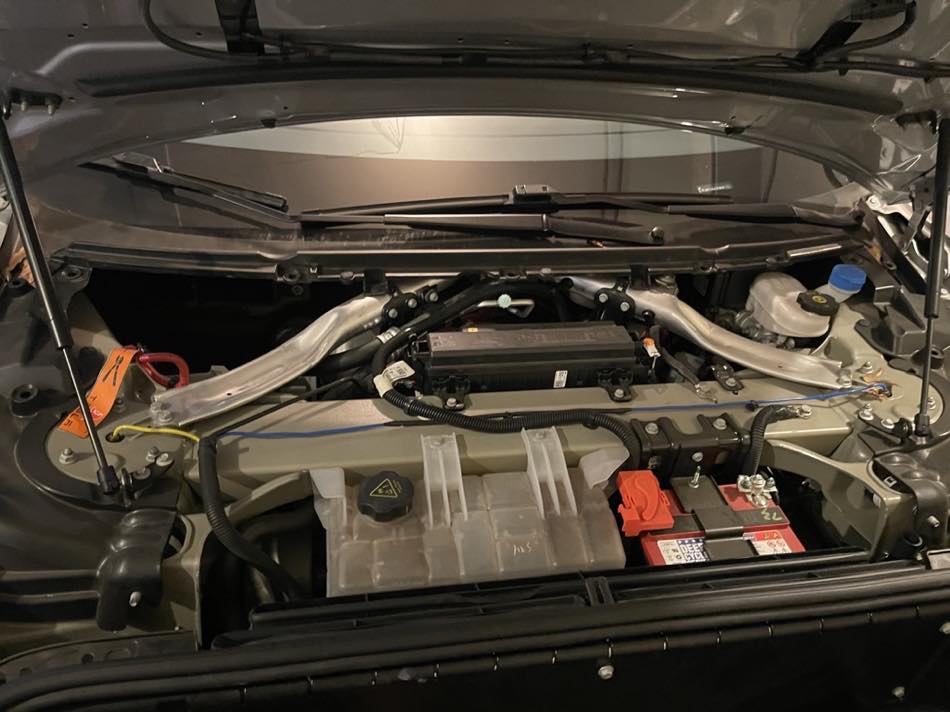Compared to internal combustion vehicles, electric vehicles have fewer parts, experience less wear and tear, and require less frequent servicing. According to the U.S. Department of Energy, the average cost to maintain an electric vehicle is approximately $0.061 per mile, while an internal combustion vehicle costs around $0.101 per mile. This means that electric vehicles are cheaper to maintain and require less frequent maintenance, resulting in significant savings in both time and money.
Fewer Consumables
Compared to combustion engines, electric motors are easier to maintain as they have fewer moving parts and no need for liquids or gases. Electric motors create no friction and do not produce any exhaust, which means no need for oil or filters. The only parts that an electric vehicle typically needs replacing are consumables such as tires, windshield wipers, brake pads, cabin air filter, a 12-volt battery and regular charging.
Electric Vehicles Have Fewer Parts
It’s important to mention that electric vehicles have a simpler design with fewer parts compared to internal combustion vehicles. This results in less wear and tear over time since parts such as timing belts, cylinders, cooling hoses, and cylinder heads are absent in electric vehicles. As a result, electric vehicles require less maintenance and fewer replacements needed over time.
Regenerative Braking Reduces Brake Wear
One of the biggest differences between gas and electric cars is how they brake. Gas cars use brake pads, while electric cars mainly rely on their electric motors to slow down or stop. Regenerative braking reduces wear on the brakes and captures energy to improve driving range. It’s worth noting that different electric car makers may use regenerative braking in slightly different ways, but the main benefit is always the same: less need for brake replacements due to less wear and tear.
Simplified Transmission Means Less Cost
Unlike internal combustion vehicles that require a multi-speed gearbox, most electric vehicles have a single-speed transmission. The electric motor directly powers the wheels, eliminating the need for an intermediary gearbox. As a result, avoiding typical breakdowns associated with traditional transmission leads to reduced maintenance costs.
Maintenance Electric Vehicles No Longer Require
Electric vehicles have a unique architecture that eliminates the need for certain maintenance. Here are some examples.
- Oil changes: Since electric vehicles lack mechanical engines, there is no need for oil changes.
- Spark plug replacements: Electric vehicles operate without a combustion-based engine, which means they don’t require sparkplugs. Consequently, there’s no need to replace any spark plugs in electric vehicles.
- Air Filter: Electric vehicle engines do not require an air filter replacement since they do not run on combustion.
- Belt replacements: With a simple single-speed transmission, electric vehicles no longer require timing belts, making belt replacements a thing of the past.
- Tune-ups: Electric vehicles do not require regular tune-ups as they do not have spark plugs, oil or air filters, or other adjustable parts.
Maintenance Required for Electric Vehicles
Here are some typical maintenances required for electric vehicles.
- Tire rotations: Electric vehicles require tire rotations just as much as gas cars do, making them an important aspect of regular maintenance.
- Tire Replacements: To reduce road noise, electric vehicles require tires with specialized sound-dampening technology. These tires may need replacement within two to five years.
- Brake Fluid Changes: It is recommended to change your brake fluid according to the manufacturer’s instructions, usually every two years.
- 12-Volt Battery Replacements: It is necessary to replace the 12-volt battery of electric vehicles every two to three years.
- Battery inspections: Electric vehicle batteries should be inspected per your manufacturer’s recommendations.
- Software updates: Electric vehicle manufacturers release software updates to improve performance and safety. Updates can be downloaded wirelessly or may require a dealership visit, depending on which electric vehicle model you own.
If you want to know about the electric vehicles available in the market and their estimated maintenance costs, you can visit Electric Driver to learn more.
